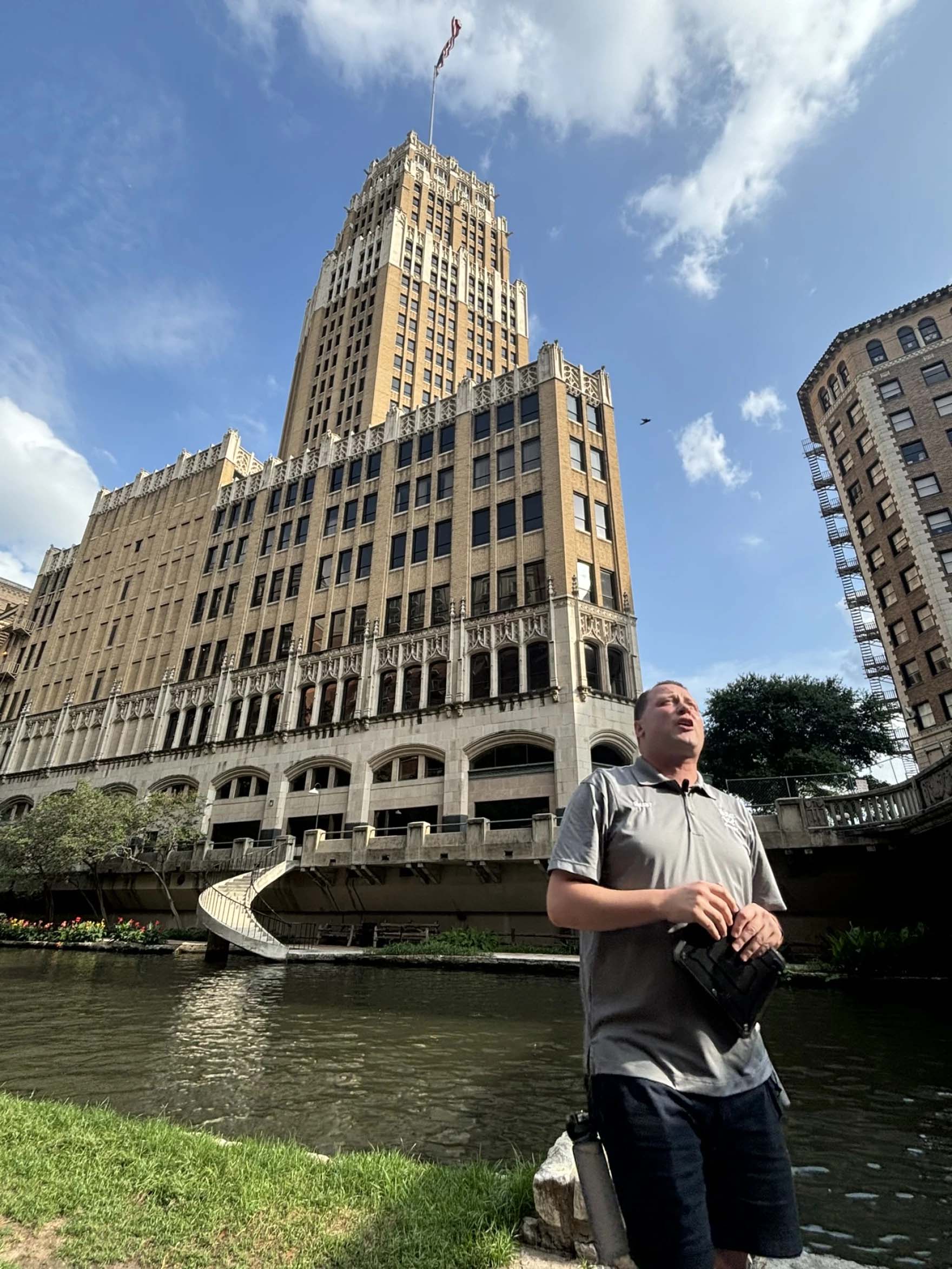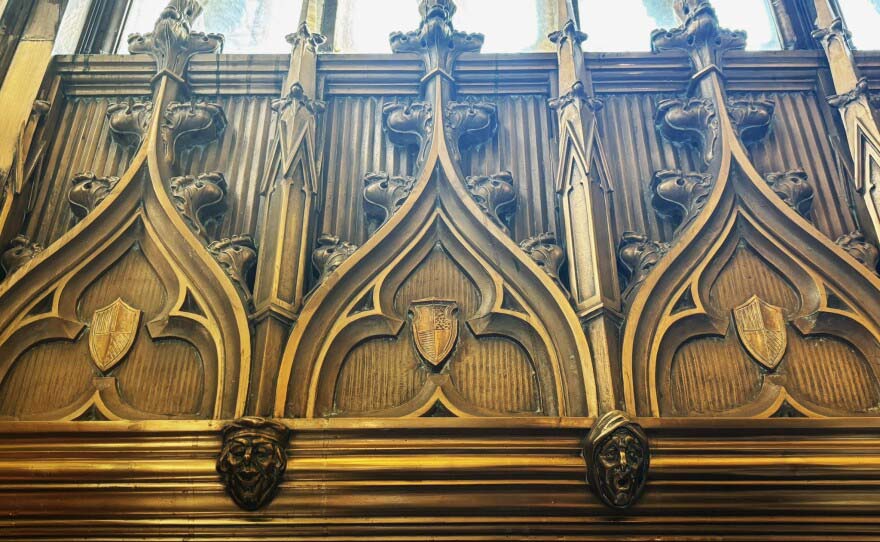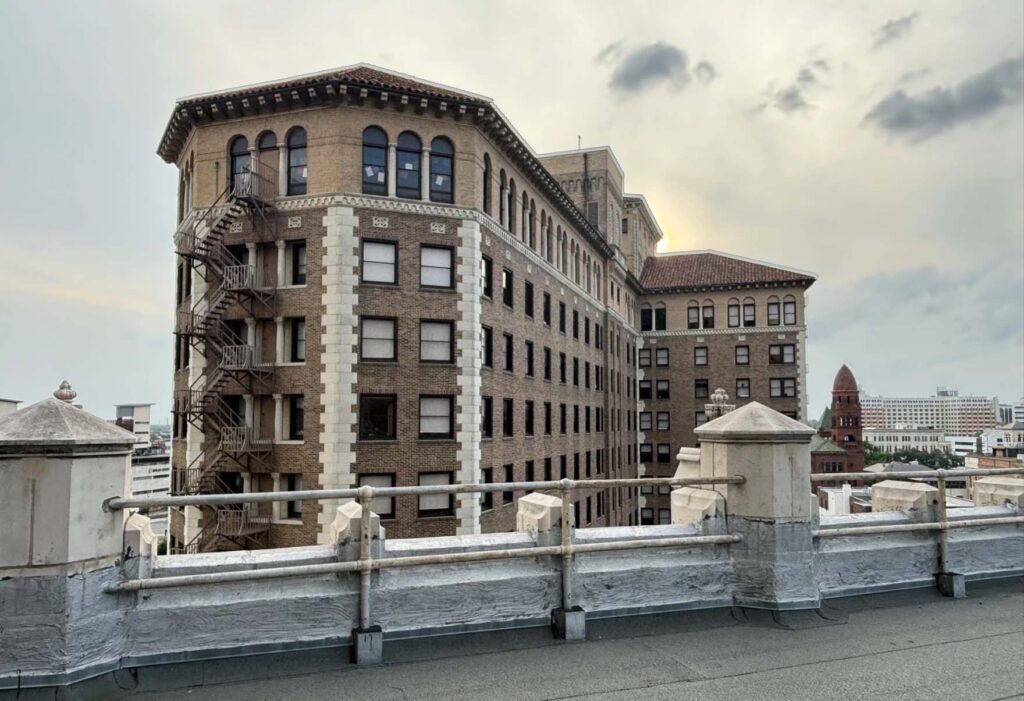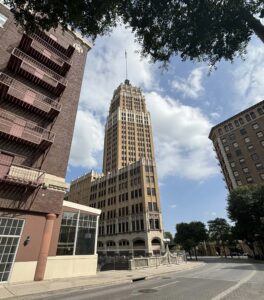From Texas Public Radio:
For decades, one building defined San Antonio’s skyline. Recently, it was sold, and remodels are coming.
But before those changes begin, tour guides offered the public the opportunity to appreciate its distinctive interior.
In late April, about 40 visitors milled about the ornate lobby of what was once the Smith-Young Tower — now the Tower Life Building. They marveled at the marble floors and walls and the vaulted Gothic ceiling.
Tour Guide Brent Salter runs Amigo Tours. He showed visitors select floors from the basement to the 30th floor.
“The owners of the building and the investors were two brothers named Jim and Albert Smith,” Salter said, explaining the story behind the original name.
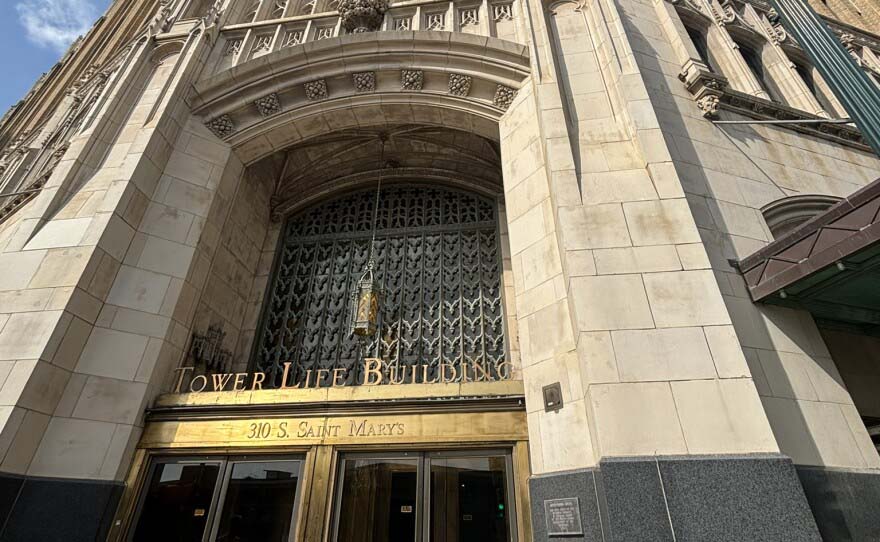
The front door to the Tower Life building.
Jack Morgan / TPR
Those brothers and partner Jay Young aspired to make their mark in San Antonio, and they selected what Salter said was an unusual location for a downtown building.
“Where the Tower Life building is today was called Bowen’s Island. And the water really was problematic with that plot of land,” he said. “The river in its original course is making it not very feasible for its use as it surrounded the land on three sides. Then there is an acequia water ditch on a fourth side.”
Downtown had been repeatedly wrecked by devastating floods, but by the late 1920s both the Olmos Dam and the the flood bypass channel had been built, making downtown investment wise again.
“Caesar Augustus is credited as saying, ‘hasten slowly.’ So there we see the Smith brothers say, ‘let’s start with a small structure first,’” Salter explained.
After re-routing the water, they built the Federal Reserve building, which is now the Mexican Consulate, at the corner of Villita and Navarro Streets, just a block away.
“Their next structure is a hotel, called the Plaza Hotel. Today we call it the Granada Apartments for older adults,” Salter said.
Both structures were considered successful. The brothers then turned their attention to what they really wanted to build: the tower.


